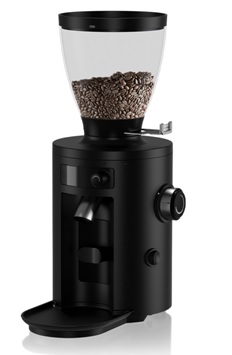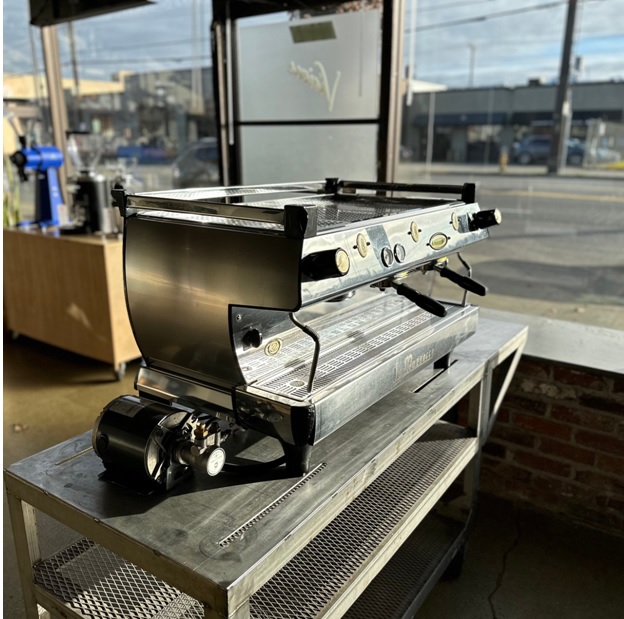
From Bean to Cup: The Journey of Coffee Beans
Feb 21st 2023
A great cup of coffee starts with great coffee beans. Whether you prefer a bold espresso shot or a smooth pour-over, the quality of the coffee beans used can make all the difference. But have you ever wondered how those beans go from a coffee farm to your favorite cafe?
In this blog post, we'll take a journey through the life of coffee beans, exploring the process from harvesting to roasting, and all the steps in between. We'll also look at the tools that baristas use to craft the perfect cup, including the all-important espresso machine. So, grab your favorite mug and let's dive into the fascinating world of coffee-making.
The Journey of Coffee Beans from Harvesting to Roasting
Coffee is one of the most popular drinks worldwide, and for good reason. Whether you're looking for a morning boost or a comforting drink during a break, coffee provides a perfect pick-me-up. While the role of the barista is undoubtedly important, it all starts with the coffee bean. The quality of the beans can make or break your coffee, which is why coffee enthusiasts prioritize the sourcing and preparation of their beans.
A. Picking the Coffee Cherries
The process of making the perfect cup of coffee starts with selecting the right coffee beans. Coffee cherries are the fruits of the coffee plant and are harvested by hand or machine depending on the terrain and geography of the farm. This process involves picking only the ripest cherries as the unripe ones will not provide the desired flavor.
B. Processing the Coffee Cherries
Once the cherries have been picked, they undergo one of two processes to remove the outer skin and pulp: the dry or wet method. The dry method involves leaving the cherries in the sun to dry for several weeks, which results in a fruitier and less acidic flavor. The wet method involves washing the cherries to remove the outer skin and pulp, then fermenting them for one to two days before being washed and dried.
C. Sorting and Grading the Coffee Beans
After processing, the coffee beans are sorted by size and density to remove any defects or impurities. This step is important as it ensures that only the best quality coffee beans are roasted and sold. The beans are also graded based on their flavor and aroma, which is determined by professional tasters called cuppers. The grading system varies by country and can have an impact on the price and quality of the beans.
Roasting Coffee Beans
When coffee beans are roasted, they undergo a chemical reaction that transforms them from their original green color to a rich brown. Roasting is what gives coffee its characteristic flavor and aroma, and it is a crucial step in the coffee-making process.
Roasting coffee beans is a complex process that requires skill and expertise. The beans are heated to high temperatures in a roaster, and the roast master carefully monitors the process to ensure that the beans are roasted to the perfect level. The roasting time and temperature are adjusted depending on the desired roast level.
Now there are several different roast levels, each with its own unique flavor and aroma. Light roasts are generally more acidic and have a milder flavor, while dark roasts are fuller-bodied and have a stronger, more bitter flavor. Medium roasts offer a balance between the two, with a slightly sweet and slightly acidic flavor. Knowing the different roast levels and their characteristics can help you choose the perfect coffee for your taste.
Grinding Coffee Beans
Once the beans have been roasted, the next step is to grind them. This process breaks down the beans into smaller particles, which allows for better extraction of flavors and aromas during brewing.

A. Types of Grinders
There are two types of grinders used for coffee beans: blade grinders and burr grinders. Blade grinders use a spinning blade to chop the beans, while burr grinders crush the beans between two revolving abrasive surfaces. Burr grinders are preferred by many coffee enthusiasts as they produce a more consistent grind size.
B. Choosing the Right Grind Size
The ideal grind size depends on the brewing method used. For example, a French press requires a coarse grind while an espresso machine needs a fine grind. Using the wrong grind size can result in an over-extracted or under-extracted cup of coffee.
C. Importance of Freshly Ground Beans
The freshness of the coffee beans is crucial to the quality of the final product. Once the beans are ground, they begin to lose their flavor and aroma. For this reason, it's best to grind the beans just before brewing to ensure maximum freshness. This is why many coffee shops and cafes invest in high-quality burr grinders and train their baristas to grind the beans on-demand for each order.
The Role of Espresso Machines
Espresso is a beloved coffee beverage that is enjoyed by many coffee lovers around the world. The secret to making great espresso lies in the quality of the coffee beans, the skill of the barista, and the use of an excellent espresso machine. Espresso machines are designed to extract the full flavor of the coffee beans, creating a rich, bold, and creamy espresso shot that is packed with flavor. They come in various shapes and sizes, and the best ones are equipped with all the necessary features to create the perfect shot of espresso every time.

The Importance of Espresso Shot Glasses
Espresso shot glasses are an essential tool for baristas when it comes to making a variety of coffee drinks. These small glasses are typically used to pull single or double shots of espresso, which is the base for many coffee drinks like lattes, cappuccinos, and Americanos. The shot glass is used to measure the amount of espresso pulled, ensuring consistency and accuracy in each cup.
In addition, the shape of the glass helps the barista to determine the quality of the espresso shot by examining the crema on top of the shot, which should be a golden-brown color and about one-third of the total volume of the shot. Without shot glasses, it would be much more difficult to create the perfect espresso shot and resulting coffee drinks.

If you are a coffee shop owner or cafe owner looking to take your coffee-making to the next level, then make sure to check out our online shop right here at Visions Espresso. From top-of-the-line espresso machines to the finest espresso shot glasses and other high-quality barista tools, we have everything you need to create the perfect cup of coffee for your customers. Our commitment to quality and innovation in the coffee industry has made us the go-to source for baristas and coffee shop owners alike. Visit our website today to browse our extensive selection of coffee equipment and accessories and take your coffee game to the next level.
